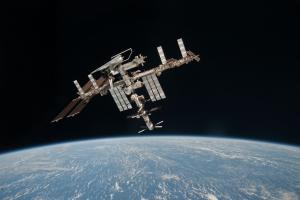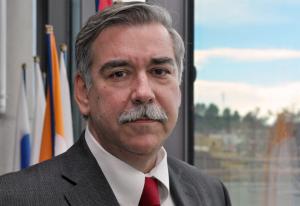Achieving mission success
"My understanding is very young ... barely four months old ... however I have been following the progress of fusion plasma R&D from a distance for several decades now."
Although as a young engineer he began his career in the field of renewable energy, Mark took a lengthy detour over to the space industry. For 28 years he held positions of increasing responsibility at NASA, culminating as program director for the International Space Station (ISS) Division at NASA Headquarters.
Of nearly three decades as part of the ambitious ISS program, following the project from conception through delivery, Mark retains many lessons—lessons that he sought to share with the ITER community during an Inside ITER seminar last week.
"For the first time in human history, we're now finding industrialized nations forming partnerships to design and build complex, technological assets for which no nation alone can bear the cost or the risk. Perhaps the lessons learned from ISS will be of use to us all, as we pursue yet another grand challenge through international partnership."
Mark spoke of the challenge of maintaining public support for complex, long-term projects through the inevitable changes in government priorities, economic conditions, and the policy-making environment. "The ISS is now up and running and I'm confident that the future R&D potential of the Space Station is at least as great as the engineering achievements already in hand. But it took 25 years to get to this point ... Along the way it was important to show progress in incremental steps, to celebrate the unprecedented scientific and technical merits of the intermediate steps as well as the final goal."
Mark took the audience back to the early days of the ISS program, recalling the "chaotic period" around the end of the preliminary design phase when people from around the world—speaking different languages, employing different design standards, and advocating different approaches to qualifying system performance and reliability—had gathered to build a permanently crewed, full service space station in low-Earth orbit.
"The sheer volume of requirements was almost overwhelming," says Mark. But with the rigorous management of the change request process and the successful organization of the systems engineering and integration function ("NASA's 'forte'") the program advance successfully. "That's why I'm personally so excited about human progress in Very Large-Scale International Systems Integration (VLISI). The state-of-the-art is really advancing globally."
One last word to the assembled crowd: "NASA had evolved a culture of testing in order to avoid schedule stalls along the way. This testing culture turned out to be invaluable to the ISS program, where we had systems and elements from around the world that were seeing one another for the first time in space. There was no room for error. We implemented a costly, but very effective multi-element integrated testing capability that exposed the potential 'glitches' that would have cost tens of millions had we encountered those faults for the first time during operations."
The ISS partners were successful in building the Space Station—an absolutely Herculean effort—because of teamwork and risk management, Mark concluded. Before ending with a quote from Henry Ford, the father of the modern assembly line: "Coming together is a beginning; keeping together is progress; working together is success."



